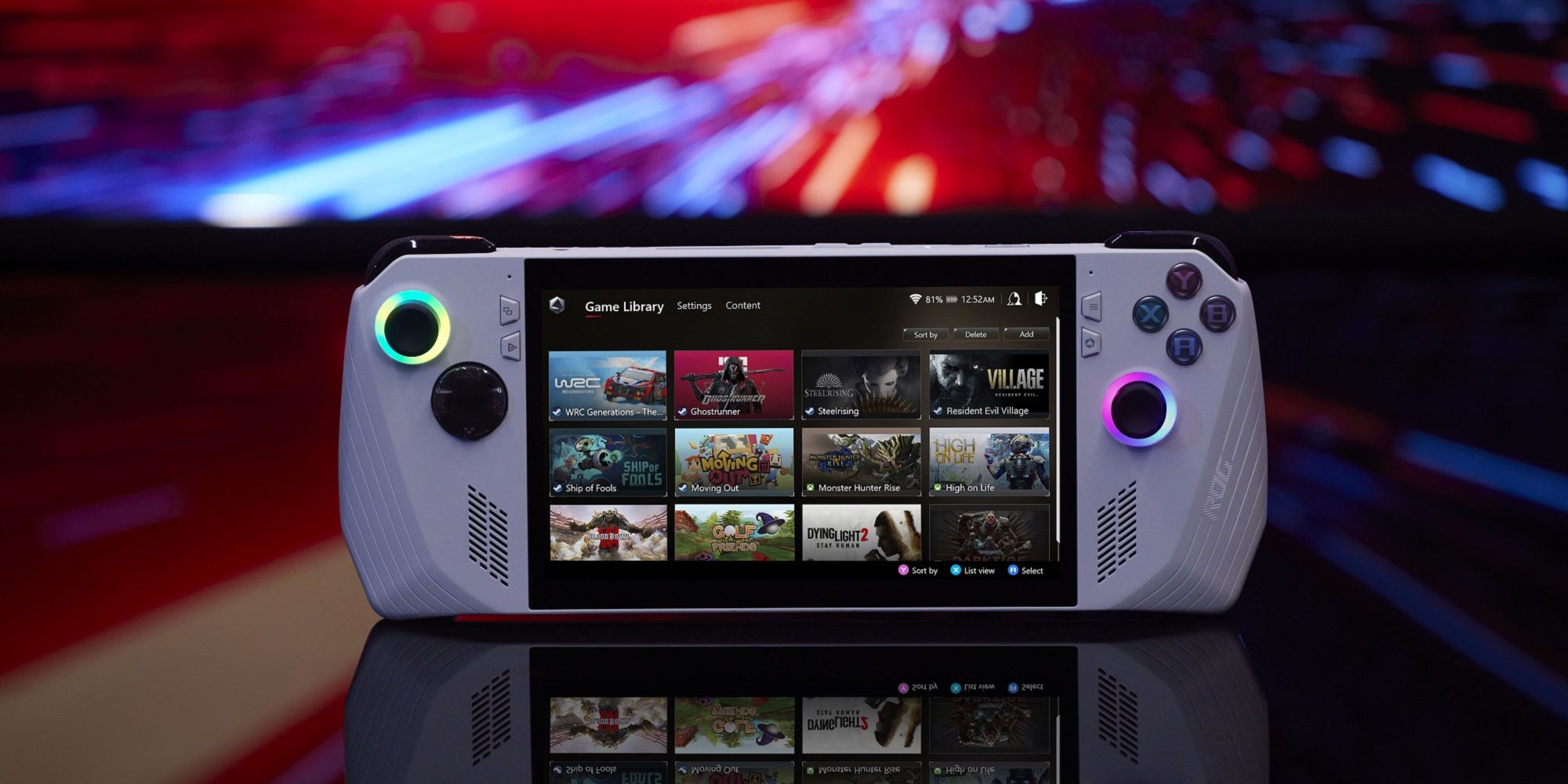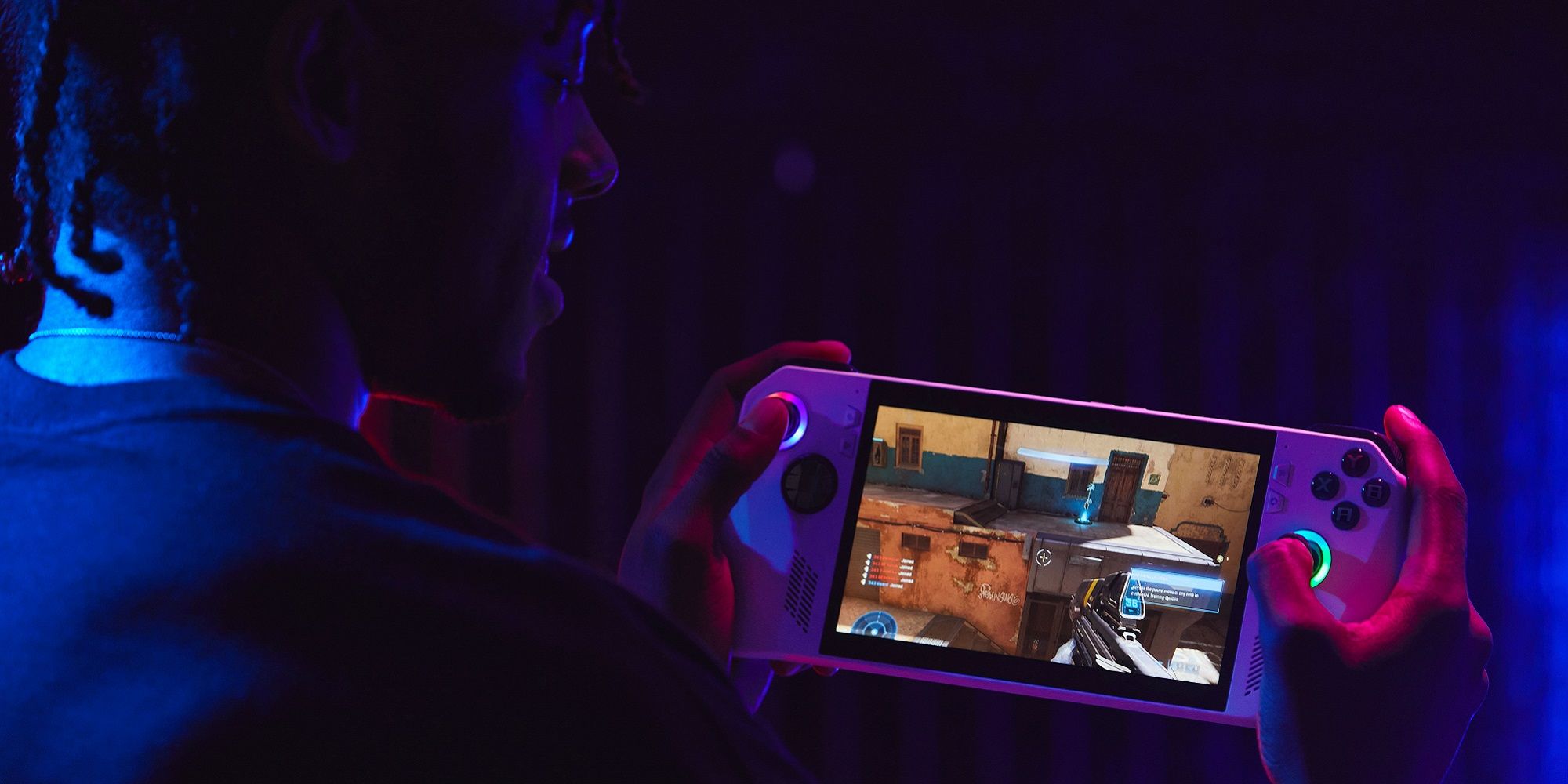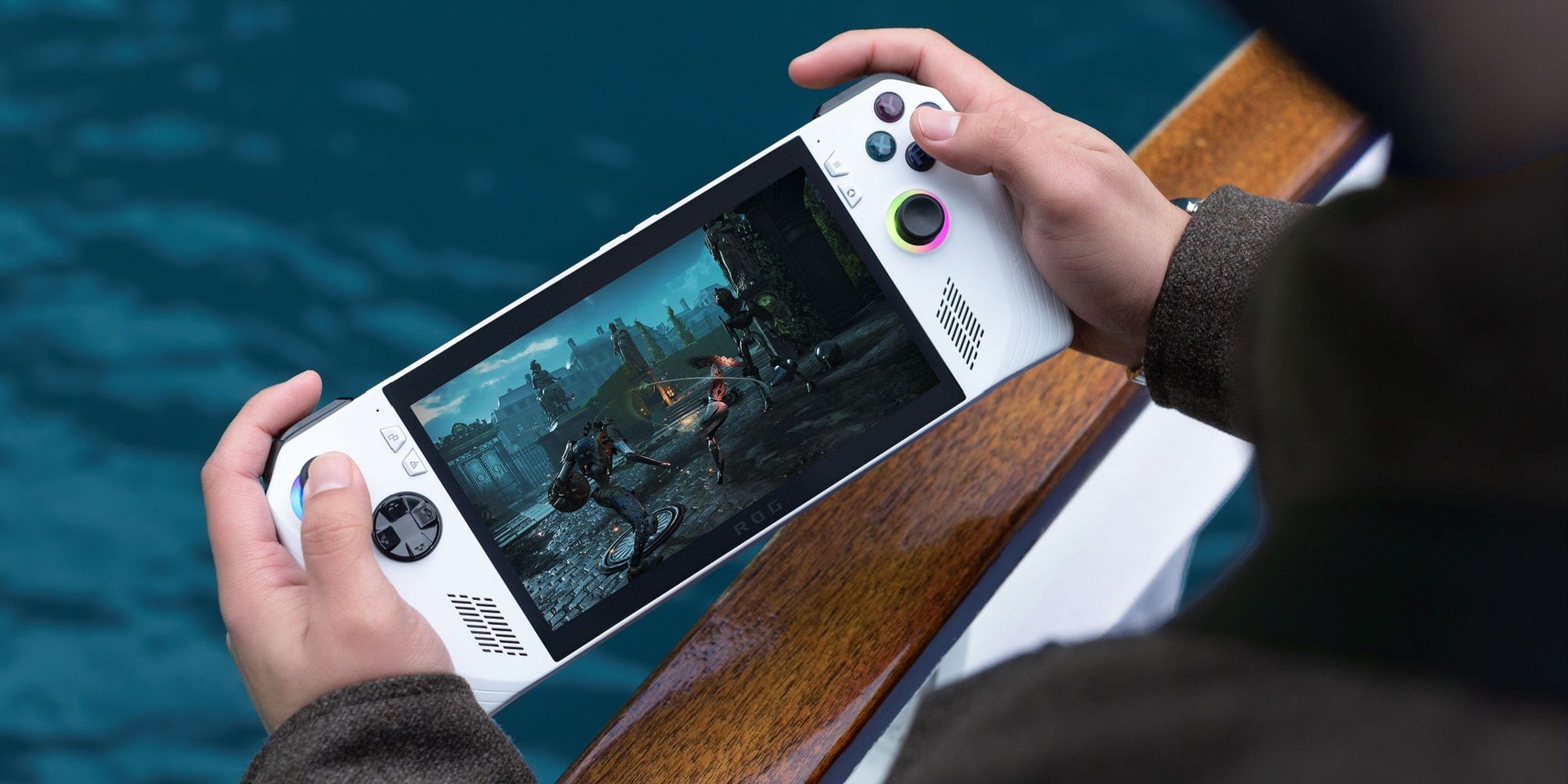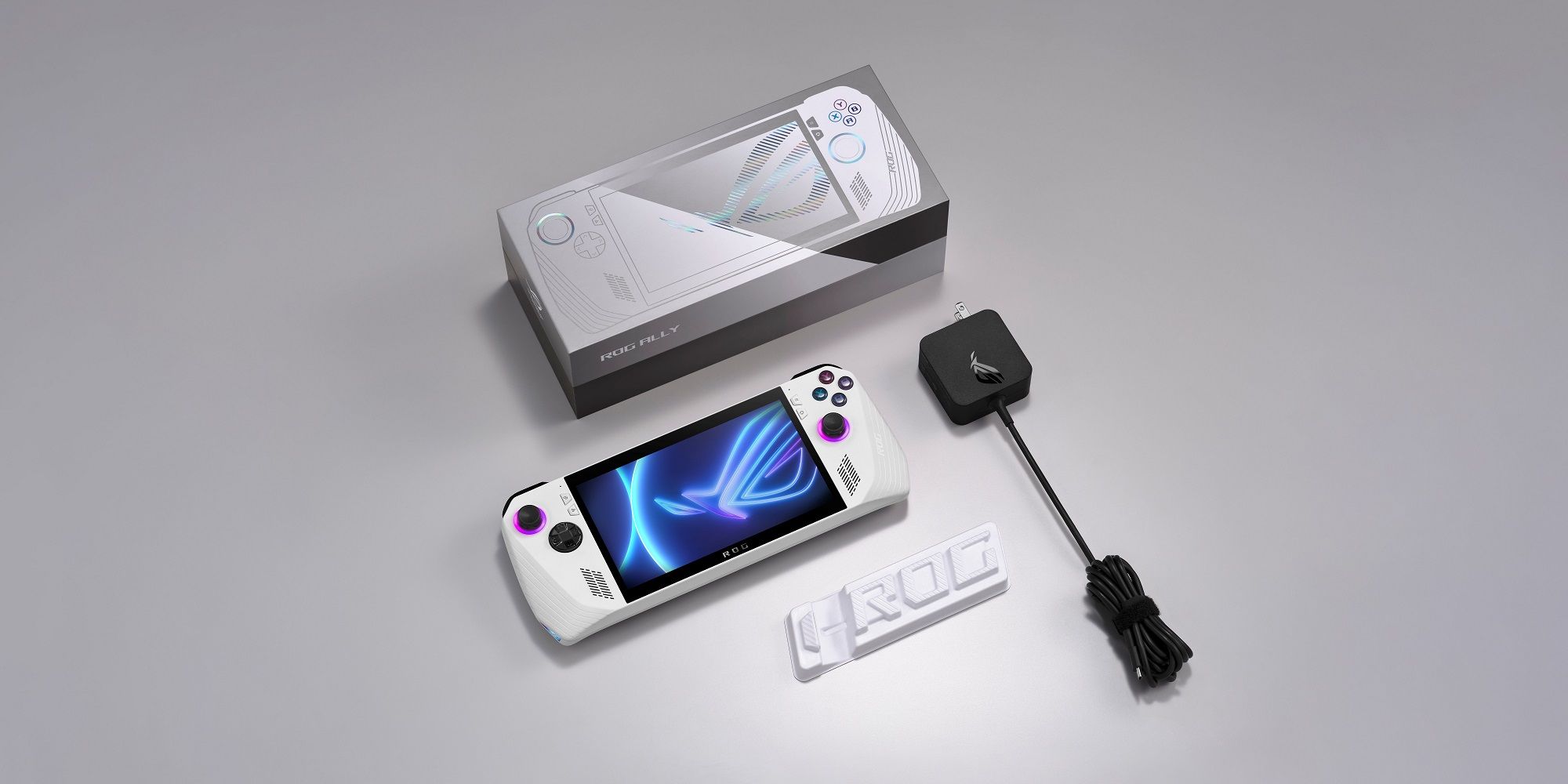What does it take to beat the Steam Deck? Republic of Gamers is hoping that the ROG Ally’s Windows-based system and gamerfied handheld will do the trick. The Ally is meant to sit next to your RGB keyboard, wave through the same colours as your cooling fans, and tell everyone sitting in your vicinity on public transport that you’re a Real Gamer. But can the technology hold up to the intensely gamery vibe? And, to put it bluntly, is it a better choice of handheld PC than Valve’s?
Okay, so I’m not a big fan of how the ROG Ally looks. I don’t know if I’m just the wrong demographic for the white case and all the RGB thumbsticks or if that just proves I’m not a True Gamer, but I much prefer the look of the Steam Deck. However, that all changes when I pick the ROG Ally up. The Steam Deck is a gargantuan beast, it feels heavy and large in my hands, which are by no means dainty themselves. The Ally, on the other hand, feels a little larger than the Switch, and is lighter than the deck too. Those glowy joysticks are easier to reach, feel fantastic to use, and the whole console is generally more comfortable to hold. I never thought I’d say this, but I miss the weird trackpads on the Deck, especially for entering text.
The biggest test is in the performance, though. I could tell you about the Ryzen Z1 Extreme Series processor, the 8.6 teraflops of processing power, and the 1080p 120Hz screen, but you really want to know how well it plays games. There’s good news and bad news. The Ally plays indie games perfectly, double-A fare well, and struggles with triple-A titles. You’ll struggle to make full use of that 120Hz screen on many games, but games like LEGO Star Wars and Hades hit 60 frames per second out of the box. More intensive games need some tweaking to hit the same benchmark: Outer Wilds runs at 30fps until you turn all of its settings to the lowest option, at which point it hits 70, and rarely drops below 60. I started playing NieR:Automata too (at the constant bequest of my colleagues), and while the beginning was not at all what I expected, it ran at 50fps comfortably. Tweaking again eked out a little more performance at a graphical cost that is imperceptible on the Ally’s 7” screen.
The problems arrive when you attempt to play triple-A games. My stress test for PCs, and therefore handheld PCs, is Cyberpunk 2077. It’s a big game with lots of stuff going on, and it doesn’t seem particularly well optimised. Maybe it’s harsh to judge the Ally with such a strenuous game, but I wanted to know how well it would cope. Unfortunately, it didn’t. Driving cutscenes played like slideshows, and it would be generous to describe simple walking simulator gameplay as choppy. It averaged at about 10fps, and while I did manage to get it running fairly smoothly (read: spikes of 25fps) by heading into the game’s settings, it’s clear that the Ally isn’t made for games of this quality.
That’s fine. I really don’t mind not playing Cyberpunk on the Ally, but it gives you a sense of the power in this thing. Consider for a minute that this thing costs considerably more than a PS5. They do different jobs, yes, and small hardware is far more costly, I agree, but there are a lot of good PlayStation games arriving in the coming months. A more fair comparison is to the Steam Deck, which in my experience runs triple-A games slightly better, but sounds like a jet plane in take-off while doing so. The ROG Ally is impressively quiet and doesn’t get too hot, even when the frame rate is tanking and the console is clearly straining under the pressure of using quickhacks in a firefight.
ROG recommends shelling out two grand on its gaming laptop (complete with an RTX 4090 graphics card) to play games at 4K with ray tracing, but that’s just not realistic for most players. The Ally is already an expensive unit at £699 – £130 more than the priciest and most comparable Steam Deck – and I’d expect it to fare a little better on triple-A titles for that cost. I’m not expecting 4K 60fps, but 1080p 30fps would be a nice minimum. ROG’s other alternative is using Game Pass to stream Xbox games, but the technology is still in its infancy, and the internet connection needed to play Starfield at a stable rate will be near impossible to achieve on the move.
The best thing about the Ally is the software. It uses Windows 11, an operating system that I’m far more familiar with than the Deck’s Linux OS, and it isn’t locked to Steam either. You can download the Microsoft Store, easily access your Xbox Game Pass titles (it also comes with three months of free Ultimate), and download your Epic games without the need for complex workarounds. Click a few links, download a few storefronts, and the games are on your homepage. If you’re playing a strenuous game, the menus can crash, but for the meantime they’re easy to navigate and simple to use. There’s a far more manageable learning curve to getting the Ally running well compared to the Steam Deck – it even comes with a little cardboard stand – and I appreciate that. It’s more difficult to tinker with things, but that’s fine by me. I’m looking for a Switch that plays PC games, not a PC that I can modify the code of on the move. If that’s you too, I’d always pick the Ally over the Deck.
The competing consoles are built for slightly different audiences: the Ally for more casual PC gamers, and the Deck for the hardcore players. As such, the Ally is far more user friendly, the UI is simpler, and it lets you play all of your games easily, not just those you bought on Steam. If the £130 difference is worth the time you’d save on tinkering, then there’s only one choice. However, the eye-watering price tag works against the Ally’s demographic: few casual PC gamers are going to pay that much for a handheld. And are hardcore players really going to shell out the extra cash for a slightly better user experience?
Competition for the Steam Deck is a good thing. The handheld PC space is still incredibly new, and the more companies that join the fight, the better results for the consumer. The ROG Ally iterates on the Steam Deck by allowing you easy access to your full games library, so will Valve follow suit and strike deals with Microsoft and Epic to get their games to run natively on the Deck? I doubt it, but the next competitor might. The Ally is lighter, smaller, and more portable, and its screen feels brighter and games look better. Ultimately, it suffers from many of the same problems as its primary competitor: how it struggles to run the biggest releases, and how any and all games so quickly drain the battery.
The ROG Ally is a console of contradictions. The high price for a more casual demographic. The beautiful screen that needs to be turned down low if you want to play games for more than a few hours. It’s a worthy competitor to the Steam Deck and I enjoy playing games on it, but is it worth £700? I can’t in good conscience say yes.




